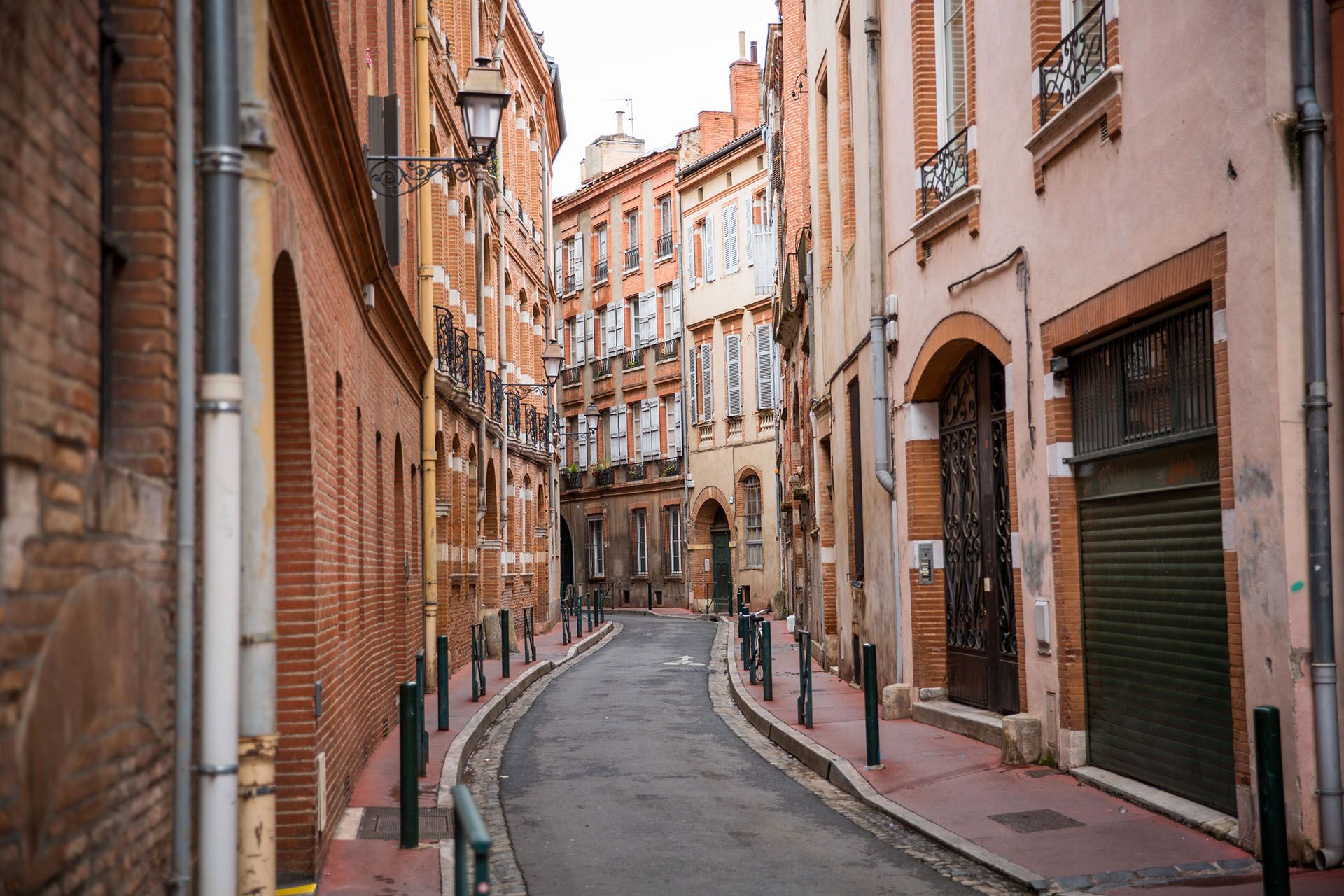Day 5: Travel to Toulouse
On day five you’ll depart Dordogne and head to Toulouse, often called "La Ville Rose" (The Pink City) thanks to its iconic terracotta brick architecture.
Travel times:
- By car: Approximately 2 hours and 45 minutes
- By public transport: 4 hours and 30 minutes (bus to Brive-la-Gaillarde, then train to Toulouse)
Once you arrive in Toulouse, check into your accommodation. Start with the Place du Capitole, one of many fantastic things to do in Toulouse, featuring the grand Capitole building. Then, explore the Basilique Saint-Sernin, a UNESCO World Heritage site and one of Europe’s largest Romanesque churches. Take a leisurely walk along the Garonne River, crossing the picturesque Pont Neuf for lovely city views.
In the evening, make your way to the lively Carmes neighborhood for dinner, where you’ll find local specialties like cassoulet and saucisse de Toulouse in one of the many charming bistros.
Day 6: Travel to Aix-en-Provence (Provence) with a stop in Carcassonne
On day six, you’re off to Aix-en-Provence, but not without a worthwhile detour to the medieval citadel of Carcassonne.
Travel times:
- By car:
- Toulouse to Carcassonne: 1 hour
- Carcassonne to Aix-en-Provence: 3 hours
- By train:
- Toulouse to Carcassonne: 1 hour by train
- Carcassonne to Aix-en-Provence: 3 hours and 30 minutes by train
Carcassonne is an absolute gem, with its stunningly preserved medieval fortress, La Cité. This UNESCO World Heritage site is the largest walled city in Europe, boasting 53 towers and two impressive rings of walls.
You can easily spend a few hours wandering its streets, exploring the Château Comtal, and visiting the Gothic Basilica of Saints Nazarius and Celsus. Make sure to walk along the ramparts for sweeping views of the countryside.
After your visit to Carcassonne, continue your journey to Aix-en-Provence. Once there, settle into your accommodation and take an evening stroll down Cours Mirabeau, a beautiful tree-lined avenue dotted with 17th and 18th-century mansions, fountains, and lively cafes.











